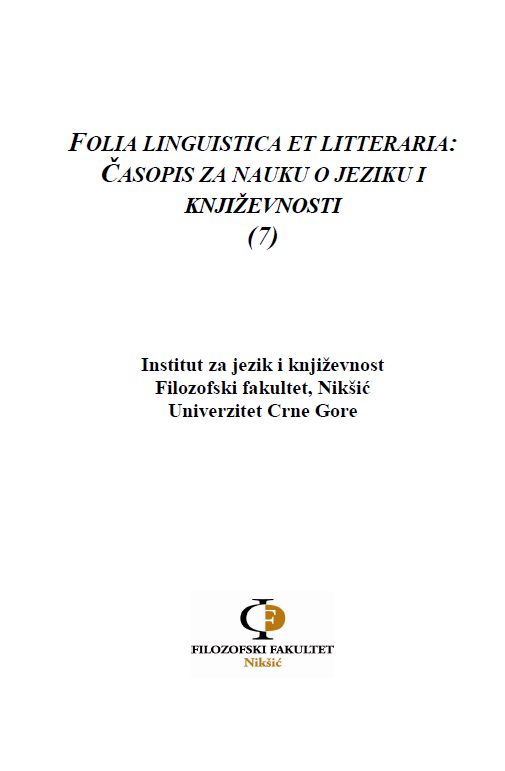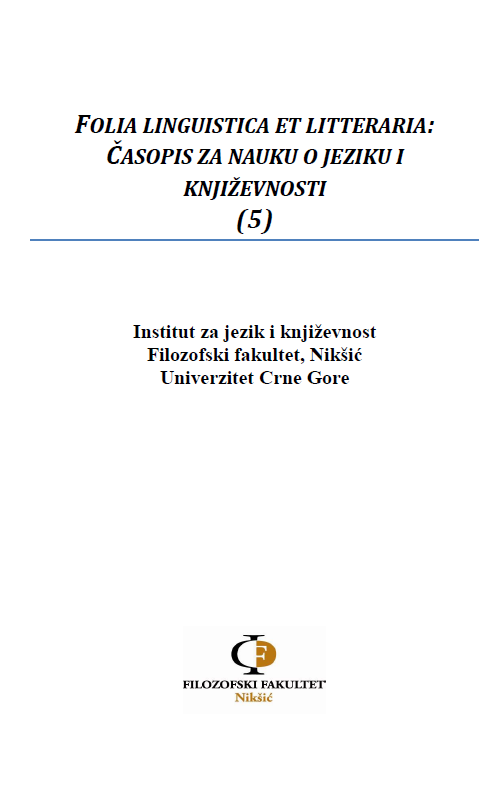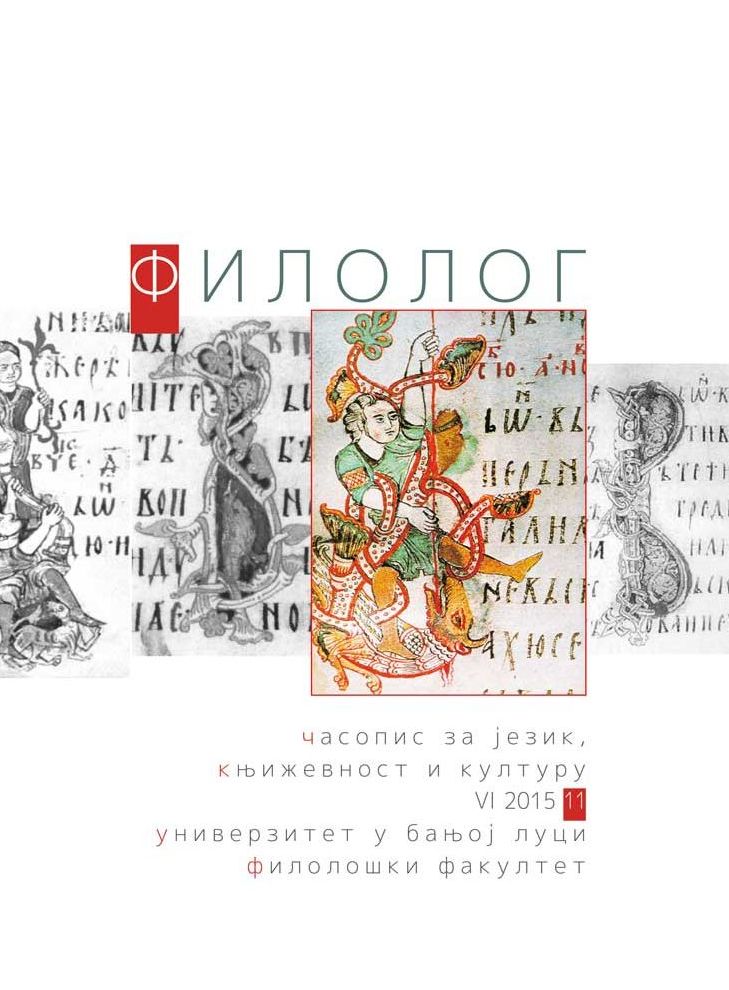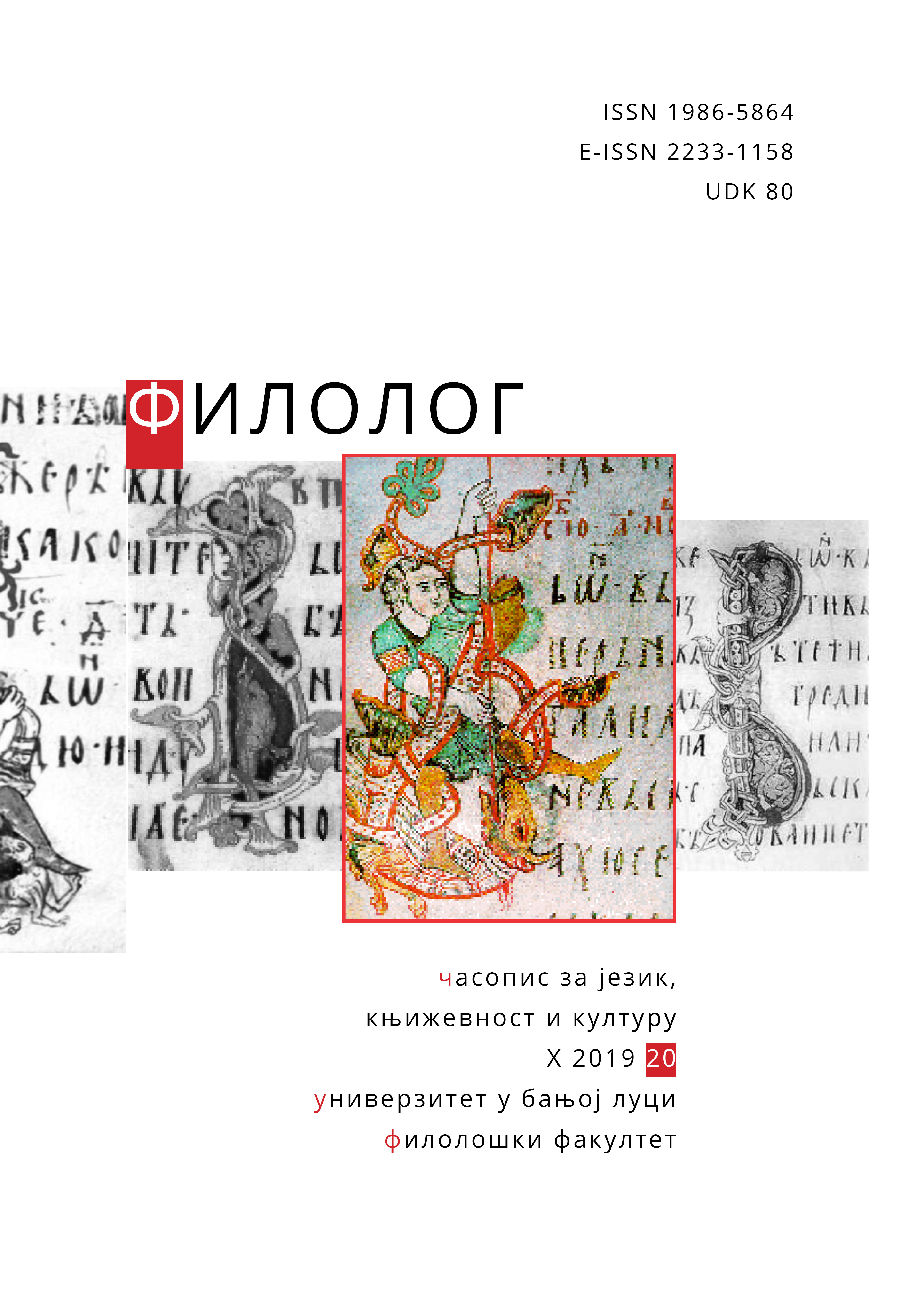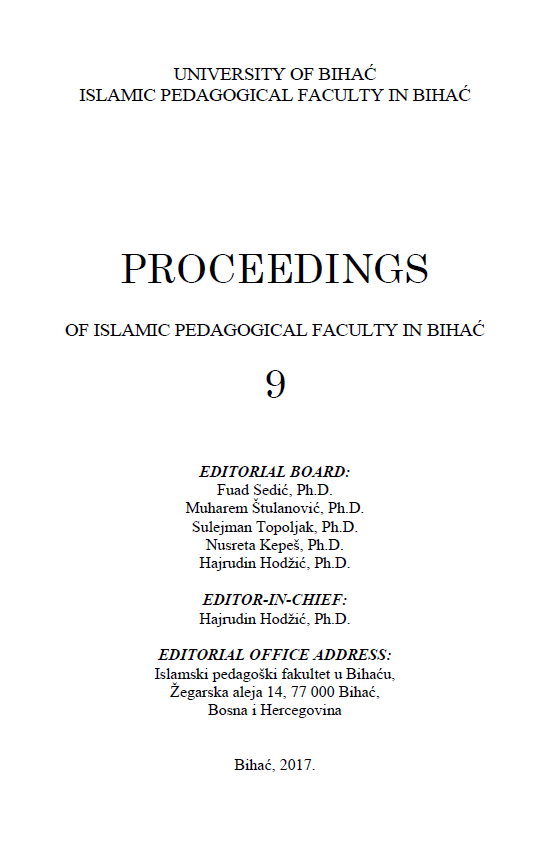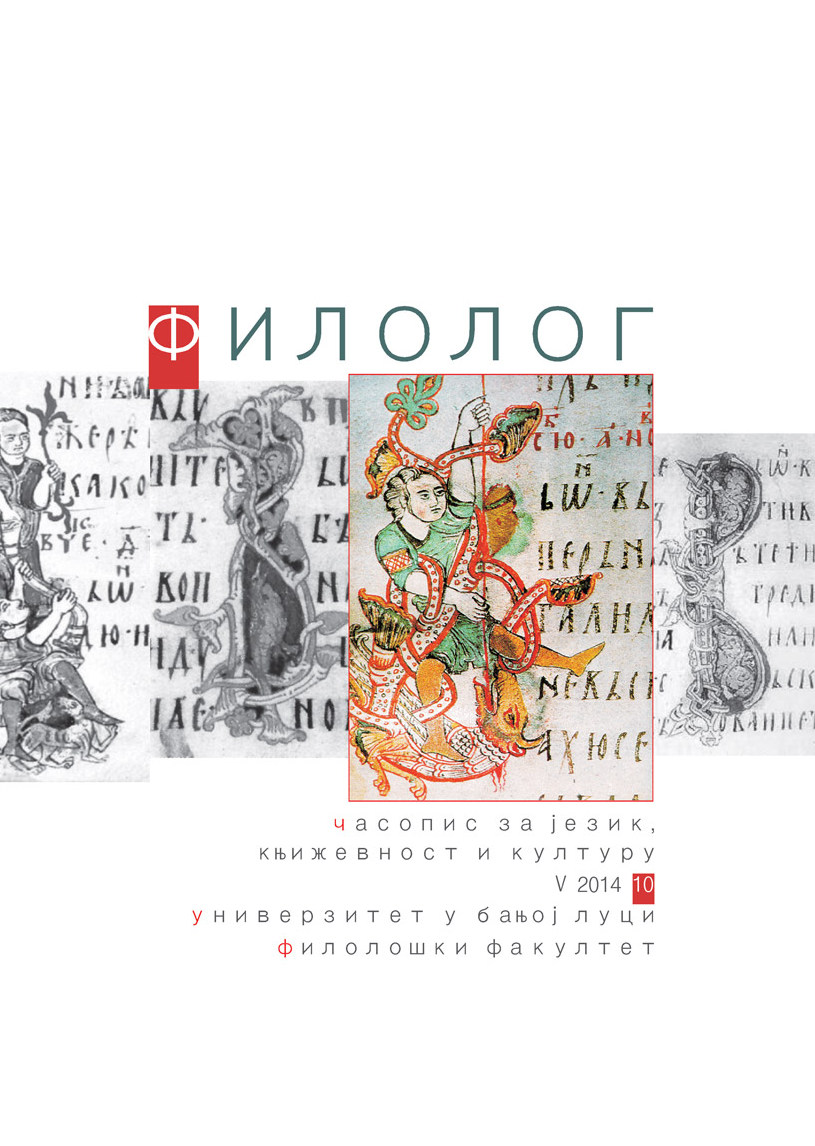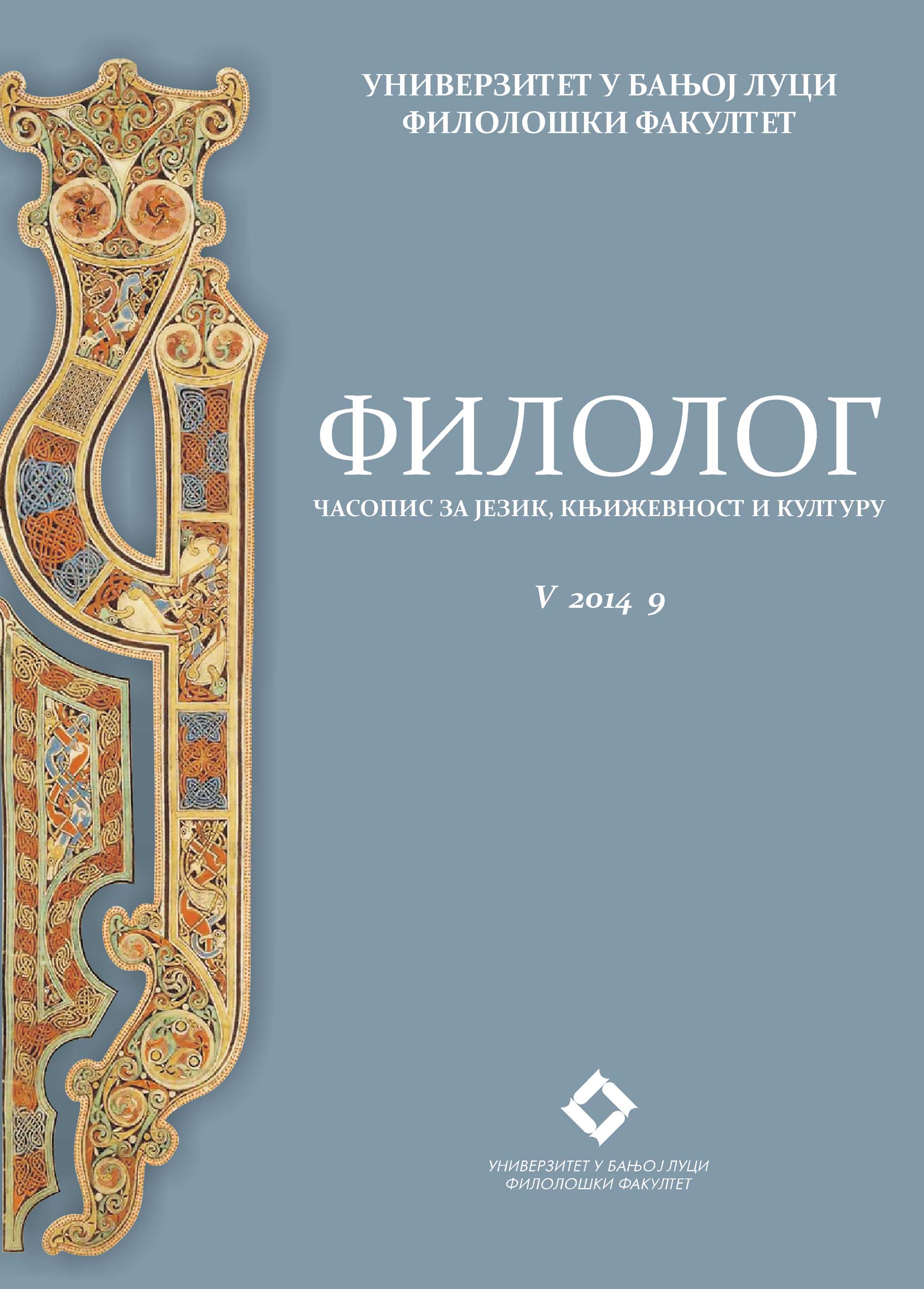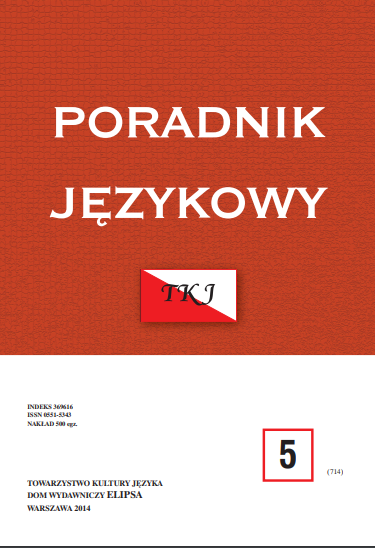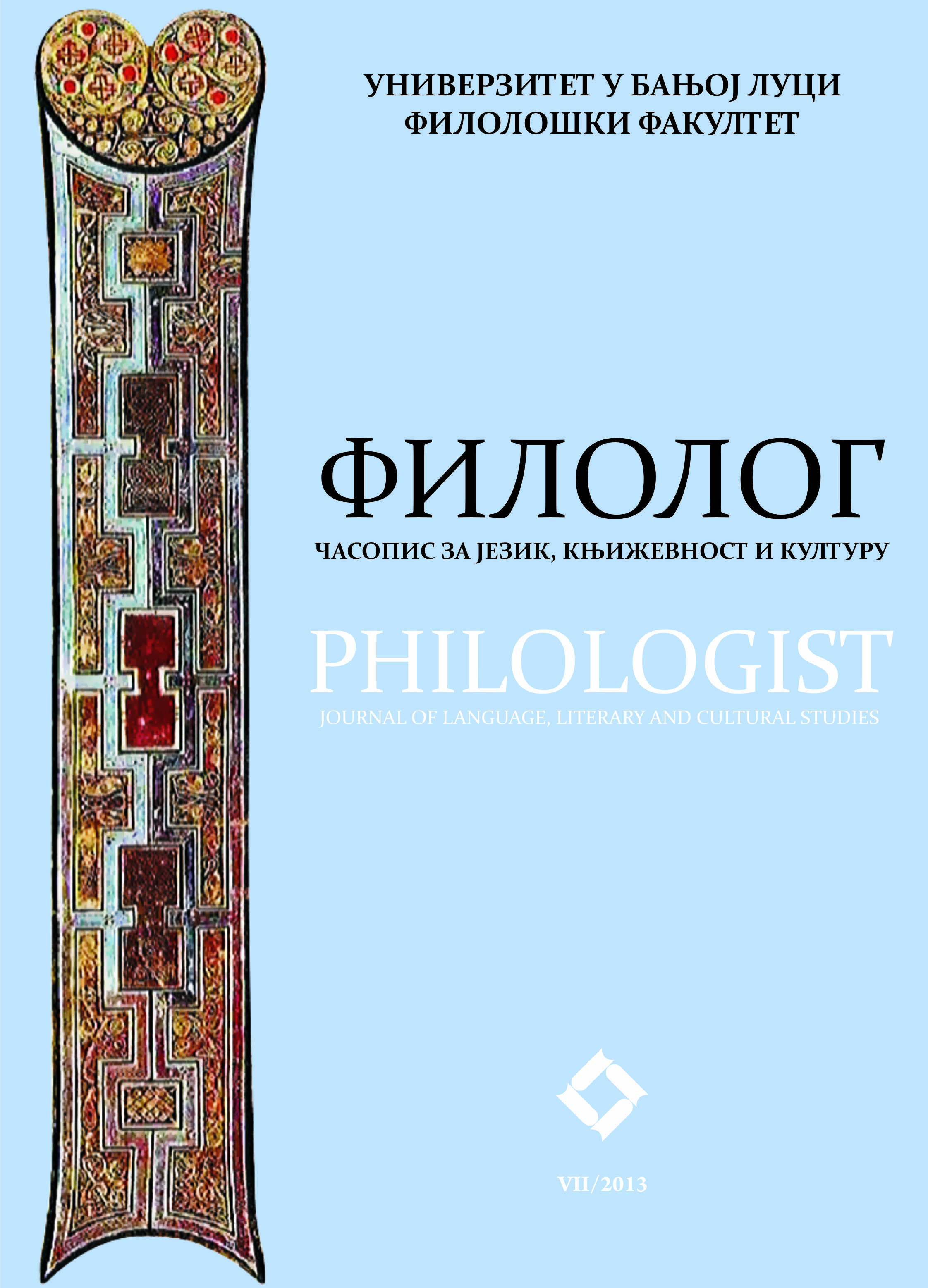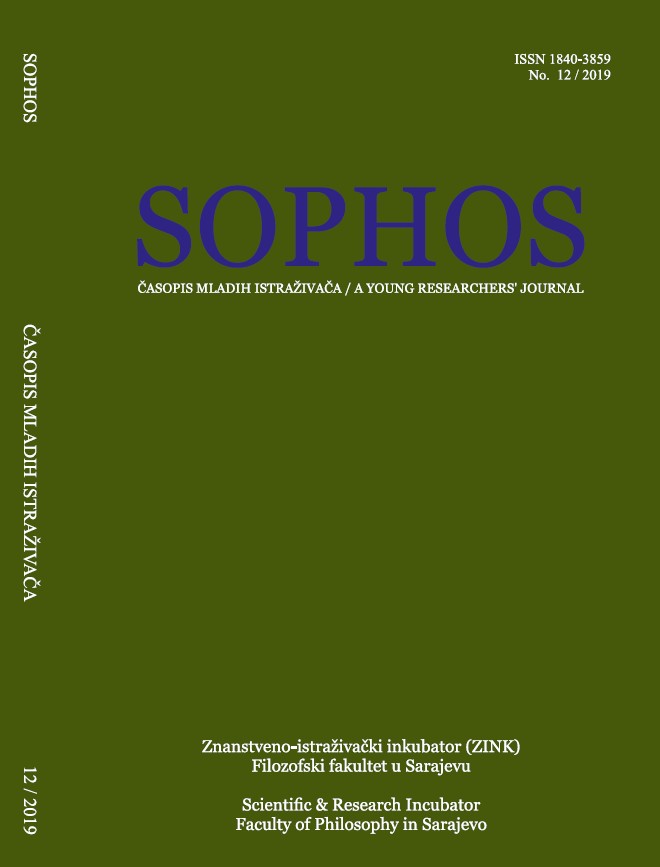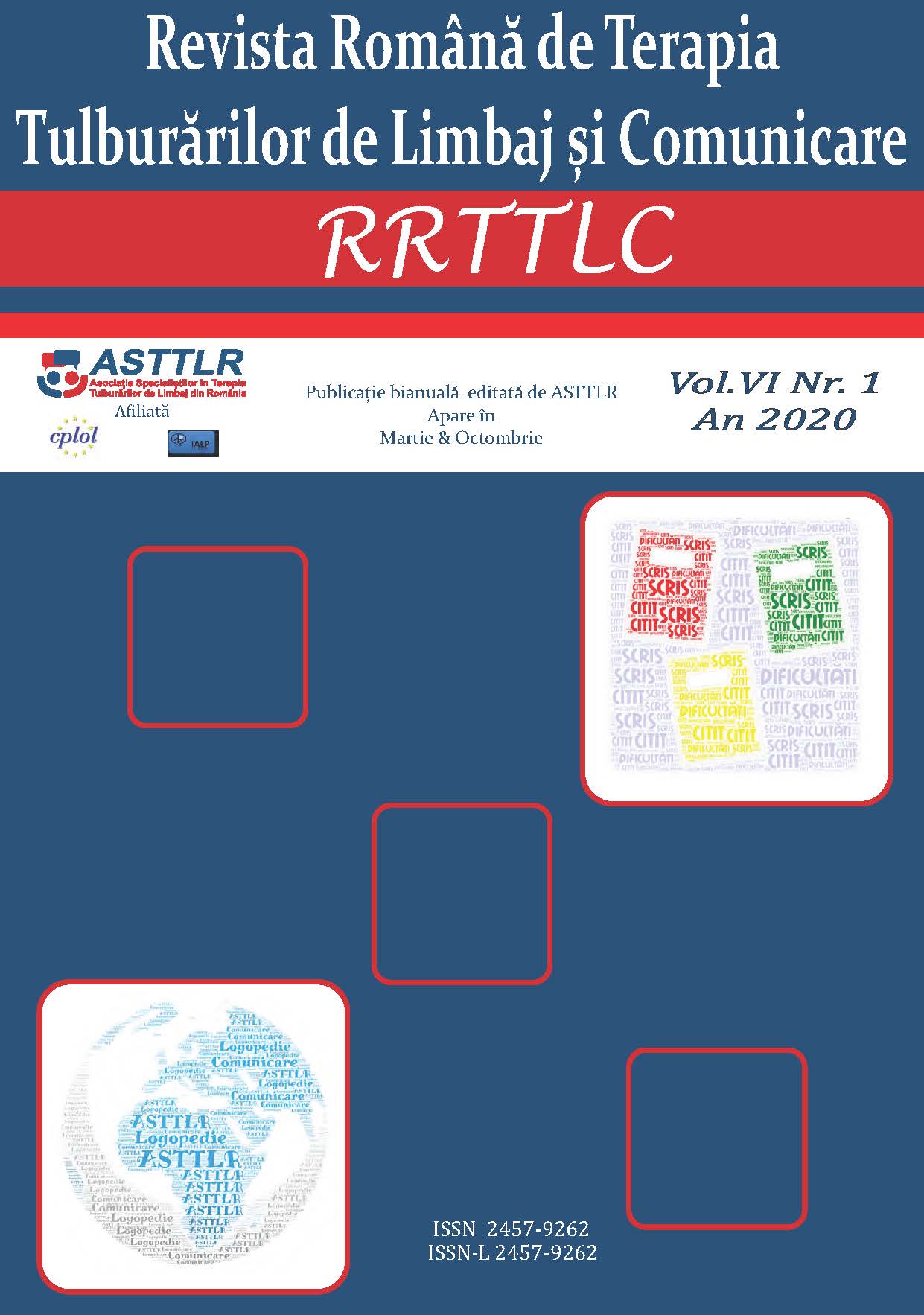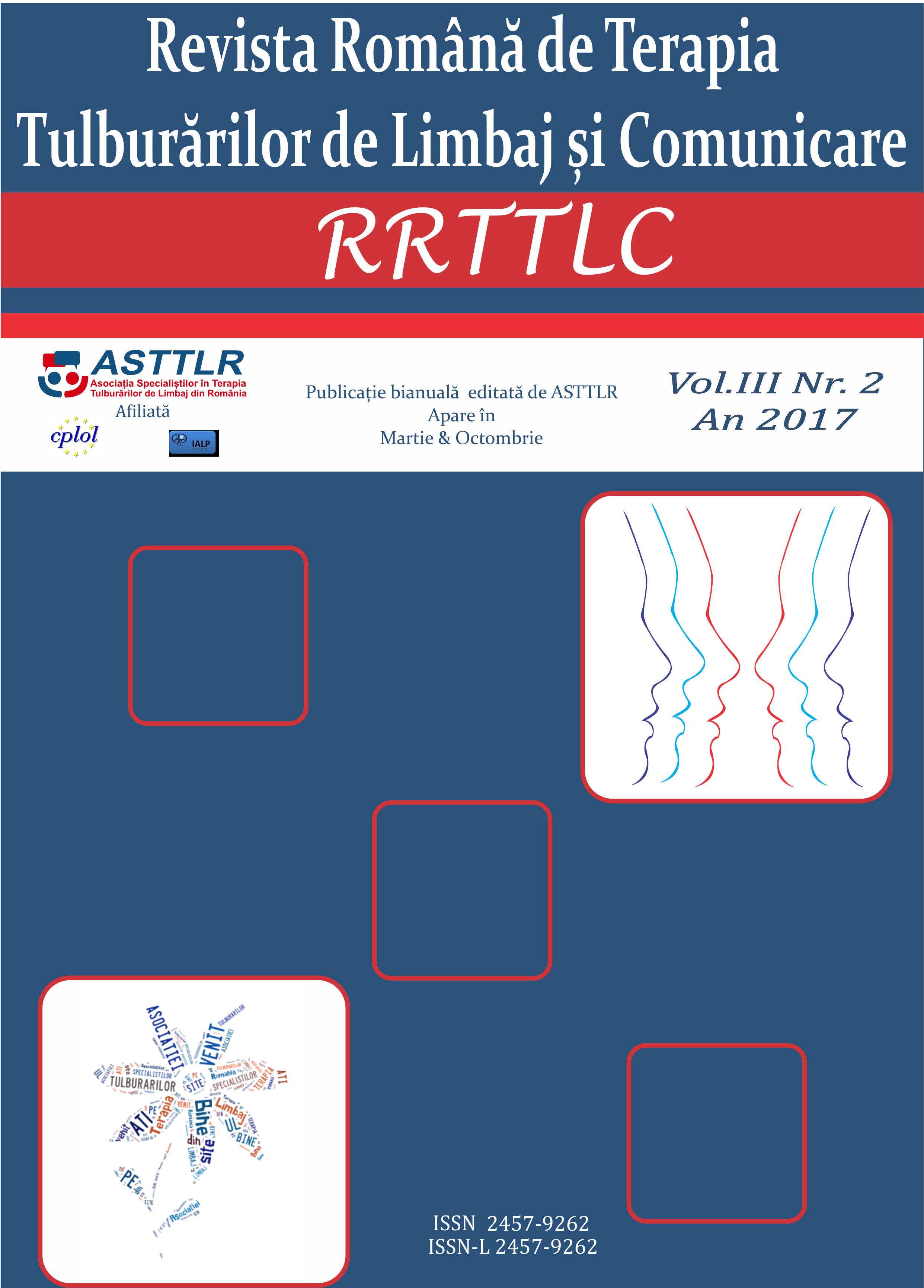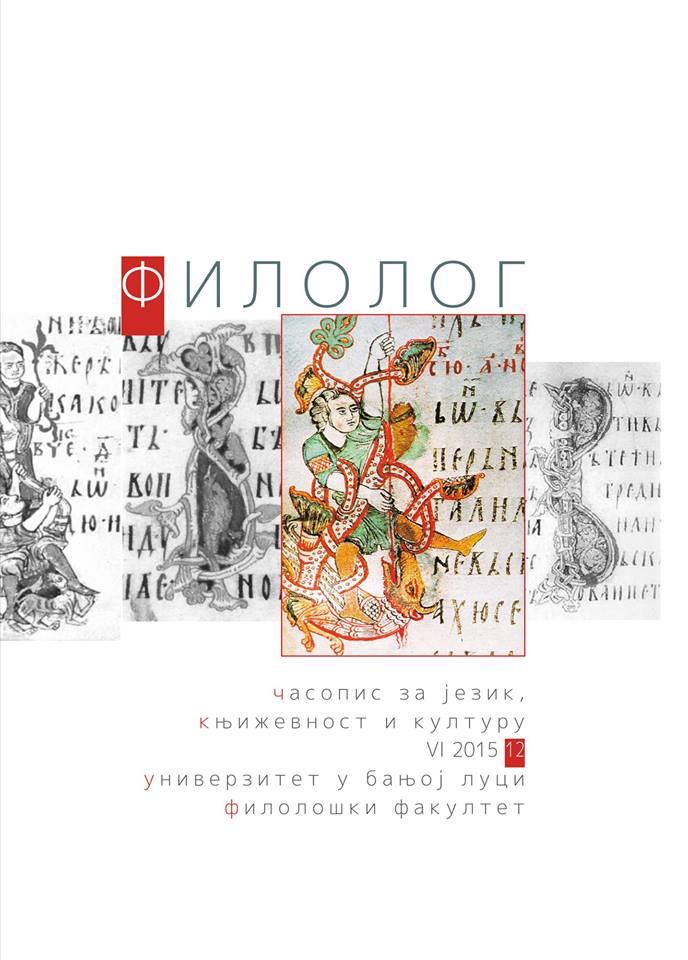
Стилематичко обликовање мисли о жени у Ћопићевом роману „Осма офанзива“
This paper deals with the linguistic and stylistic procedures used in Ćopić’s novel The Eighth offensive in shaping the notion of a woman in two male characters – Stojan Starčević and Pepa Bandić, with a view to describing and explaining, from a linguo-stylistic perspective, the hues of attitude of these two characters towards the woman. In this respect, a classic linguo-stylistic approach is complemented by one of the contemporary literary stylistics. The analysis shows that in the novel these stylistic features can be divided into two groups: semantic and syntactic ones. Therefore, they are most visible in the cases of (1) a stylistically marked syntactic structure and (2) a lexical unit realised with a meaning shift in the context given. Th e analysis also shows that there could be more than one procedure in a sentence, which implies that Ćopić’s characters take a subtle and balanced stance on women, proving that Ćopić paid special attention to language matters in his texts.
More...
